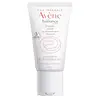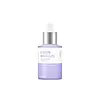What's inside
What's inside
 Key Ingredients
Key Ingredients

No key ingredients
 Benefits
Benefits

 Concerns
Concerns

No concerns
 Ingredients Side-by-side
Ingredients Side-by-side

Lactobacillus/Soybean Ferment Extract
Skin ConditioningBifida Ferment Lysate
Skin ConditioningLactobacillus Ferment Lysate
Skin ConditioningLactococcus Ferment Lysate
Skin ConditioningButylene Glycol
HumectantGlycerin
Humectant1,2-Hexanediol
Skin ConditioningMethyl Gluceth-10
EmulsifyingNiacinamide
SmoothingCitrus Aurantium Bergamia Fruit Oil
MaskingPogostemon Cablin Leaf Oil
MaskingCitrus Aurantium Dulcis Peel Oil
MaskingCentella Asiatica Leaf Extract
Skin ConditioningPolymnia Sonchifolia Root Juice
Skin ConditioningPanthenol
Skin ConditioningPolyglyceryl-10 Laurate
Skin ConditioningDiphenyl Dimethicone
EmollientTromethamine
BufferingTriethylhexanoin
MaskingWater
Skin ConditioningEthylhexylglycerin
Skin ConditioningAdenosine
Skin ConditioningHydrogenated Lecithin
EmulsifyingAlpha-Glucan Oligosaccharide
CleansingMadecassoside
AntioxidantAsiaticoside
AntioxidantMaltodextrin
AbsorbentTocopherol
AntioxidantLactobacillus
Skin ConditioningCarbomer
Emulsion StabilisingLimonene
PerfumingLinalool
PerfumingLactobacillus/Soybean Ferment Extract, Bifida Ferment Lysate, Lactobacillus Ferment Lysate, Lactococcus Ferment Lysate, Butylene Glycol, Glycerin, 1,2-Hexanediol, Methyl Gluceth-10, Niacinamide, Citrus Aurantium Bergamia Fruit Oil, Pogostemon Cablin Leaf Oil, Citrus Aurantium Dulcis Peel Oil, Centella Asiatica Leaf Extract, Polymnia Sonchifolia Root Juice, Panthenol, Polyglyceryl-10 Laurate, Diphenyl Dimethicone, Tromethamine, Triethylhexanoin, Water, Ethylhexylglycerin, Adenosine, Hydrogenated Lecithin, Alpha-Glucan Oligosaccharide, Madecassoside, Asiaticoside, Maltodextrin, Tocopherol, Lactobacillus, Carbomer, Limonene, Linalool
 Reviews
Reviews

Ingredients Explained
These ingredients are found in both products.
Ingredients higher up in an ingredient list are typically present in a larger amount.
Glycerin is already naturally found in your skin. It helps moisturize and protect your skin.
A study from 2016 found glycerin to be more effective as a humectant than AHAs and hyaluronic acid.
As a humectant, it helps the skin stay hydrated by pulling moisture to your skin. The low molecular weight of glycerin allows it to pull moisture into the deeper layers of your skin.
Hydrated skin improves your skin barrier; Your skin barrier helps protect against irritants and bacteria.
Glycerin has also been found to have antimicrobial and antiviral properties. Due to these properties, glycerin is often used in wound and burn treatments.
In cosmetics, glycerin is usually derived from plants such as soybean or palm. However, it can also be sourced from animals, such as tallow or animal fat.
This ingredient is organic, colorless, odorless, and non-toxic.
Glycerin is the name for this ingredient in American English. British English uses Glycerol/Glycerine.
Learn more about GlycerinWater. It's the most common cosmetic ingredient of all. You'll usually see it at the top of ingredient lists, meaning that it makes up the largest part of the product.
So why is it so popular? Water most often acts as a solvent - this means that it helps dissolve other ingredients into the formulation.
You'll also recognize water as that liquid we all need to stay alive. If you see this, drink a glass of water. Stay hydrated!
Learn more about Water